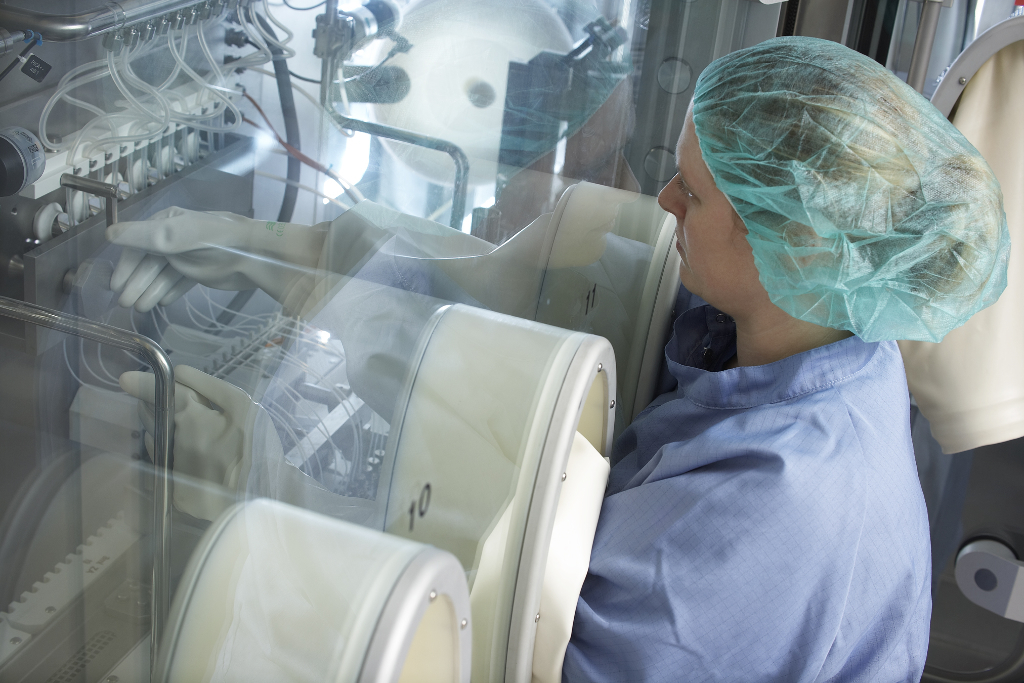
When you replace a process control system, it's important to implement a carefully planned migration strategy in order to minimize the impact on ongoing production. This is especially true when the system in question supplies downstream production lines with raw, base or auxiliary material. In these cases, even a brief outage can be amplified into major production downtime. Sanofi-Aventis Germany has implemented a pilot installation at their Frankfurt-Hoechst location for a system that supplies pharmaceutical production lines with WFI-grade water. In the process, they illustrated that even a system structure that has grown in complexity over the years can be safely and efficiently migrated using a combination of B&R's APROL technology and a well-designed strategy. Upon successful completion of this pilot project, Sanofi-Aventis – one of the world's top ten pharmaceutical companies – began migrating numerous other plants to the powerful process control system from B&R.
As plants and systems age, their reliability may begin to waver or suppliers may discontinue certain components, and eventually they need to be replaced. When this happens, the top priority is to get back up and running at full capacity as quickly as possible and to ensure reliability over the years to come. Ideally, the change is also accompanied by improvements to the previous system. Yet the time and cost of migrating to more modern technology is not to be underestimated – nor is the risk of unexpected production downtime. This becomes especially critical when downstream production relies on the materials produced by the migrated system. The risks can be minimized by developing a customized migration strategy.
Managing migration risk
"There is no such thing as a one-size-fits-all migration strategy. Strategies are strongly influenced by how the individuals involved perceive the situation and assess the risks," explains Christian Sturm, the responsible Sanofi-Aventis project engineer. "Like most pharmaceutical companies, we prefer an incremental approach to migration. This minimizes the risks involved in migration without allowing the processes of system qualification and validation – which are required each time changes are made – to get out of hand."

With an incremental migration, the process control system is replaced by new technology while at the control and field level things remain relatively unaffected. If these systems also need to be replaced, the company can buy some time by building up a supply of replacement parts.
"The added security of an incremental migration does come at a price, however," Sturm points out. "For one, the existing system needs to be kept alive, parallel to the new process control system, until the migration is complete." This means extra space, extra organizational costs and extra documentation.
"The main question, though, is how and when the new process control system can be commissioned and validated," emphasizes the Sanofi-Aventis expert. "If you're able to access the existing system in parallel, then technology can be commissioned prior to the actual changeover. And perhaps more importantly, it is then also possible to qualify the control system and validate the new computer systems in advance."
These advantages more than compensate for the disadvantages of incremental migration. An important criterion when selecting a process control system is therefore the extent to which it permits and supports an incremental migration strategy.
Software structure affects life cycle
For Sturm, the complexity and usability of the software is an important consideration when evaluating a process control system. "When a plant exceeds a certain size, it's better to avoid becoming completely dependent on external services and keep the necessary know-how primarily in-house." This is only possible if the software can be used without requiring an IT expert every step of the way. "The structure of the software must also be sufficiently mature. The software should form an encapsulated unit that runs independently of the respective operating system and its programming interfaces. In the end, this will increase the service life of the control system," adds Sturm.
Many migration tools claim to help manage complexity and simplify engineering. "Unfortunately, it has been our experience that not all tools live up to their promises," says Patrick Heiber, head of EMR maintenance at Sanofi-Aventis. One problem we frequently encounter is that systems tend to accumulate dead code over the years, and a migration tool will automatically adopt this unnecessary code into the new system without checking it. Instead of simplifying the software, this makes it even more complex. "Migration tools can also be very helpful in reducing the amount of programming required," Heiber concedes, "although I have yet to see a tool that delivers 100% migration without requiring some level of manual interference or revision – especially when it comes to dynamic objects." Checking the code and objects remains an indispensable step in the process.
Dedicated tools can often provide the best possible support for the migration process, as the TAG Importer from APROL demonstrates. The TAG Importer only needs to be validated once, and can then read the code from various controllers and create an entire APROL project at the press of a button with virtually no input from the user. "Once the process has been validated according to the specifications in CFR Title 21, Part 11 or Annex 11, it is safe to assume that the process functions reliably and doesn't require any further qualification," adds the Sanofi-Aventis project manager. "The TAG Importer tool is not only helpful during migration, but also when making modifications later in the system's life cycle."

"The results confirm that B&R APROL was the right choice."Christian Sturm, Project Engineer, Sanofi-Aventis Deutschland GmbH
B&R's APROL comes out on top
When Sanofi-Aventis initiated the migration project for 15 systems that supply Water For Injection (WFI) for pharmaceutical applications – systems that had been growing in size and complexity for many years – the tight integration with existing controllers provided by the TAG Importer helped B&R APROL prevail over four other competing process control systems in an extensive evaluation.
B&R APROL also provides parallel access to the existing control layer while allowing the existing process control system to continue operating unimpaired. This allowed Sanofi-Aventis to perform an incremental migration including process validation "on a living subject" with impressive results.
"We're especially happy with the structure of the software, which we tested quite thoroughly," reports Sturm. "As a Linux-based system, APROL comes very close to the ideal of an encapsulated automation solution decoupled from the fast-changing world of office software." Sturm also cites APROL's intelligent disaster recovery mechanisms as contributing toward the decision in favor of B&R. "B&R also set up a control computer that doesn't require a degree in Computer Science to operate," adds Sturm. "Even system maintenance is no problem for our own personnel."
Pilot installation with APROL and ABB Freelance controllers
Sanofi-Aventis already uses large numbers of B&R components, though they had never implemented a full company-wide project with APROL. "As a pharmaceutical company we are very conservative, so we started the migration with a single pilot system to further reduce the risk involved in switching suppliers," explains Sturm. The pilot installation has been built new from the ground up, but provides all the same functionality as the large existing systems. We equipped it with a B&R APROL process control system and ABB components at the control and field level. "Our high expectations were fully satisfied. The results confirm that B&R APROL was the right choice," summarizes Sturm. "We have already begun the process of converting the remaining WFI systems to the new process control solution over the course of the next two years."